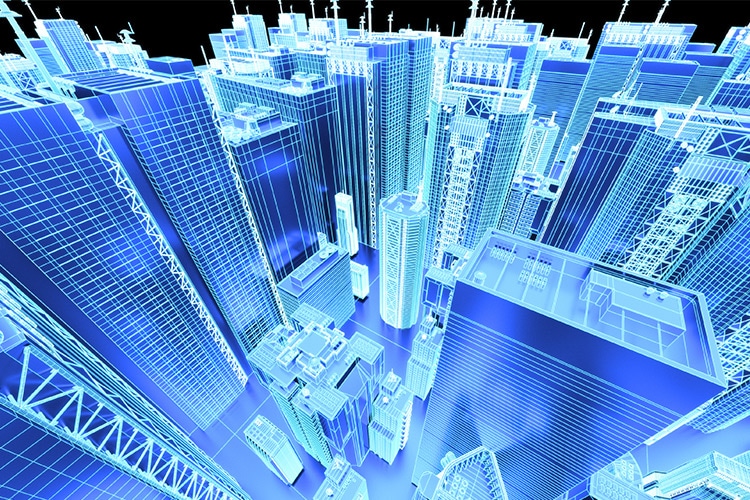Once construction on a project is complete, the collection and distribution of data for performance analysis has historically been limited to a few measurable criteria such as energy audits. But that’s changing rapidly through new analytical tools under the umbrella of “digital twin technology.” For AEC professionals, you can expect to find businesses or consultants offering digital twin technology services in the near future, and they may give you, or your competition, a necessary edge in designing and building more efficient and effective structures.
Digital twins are computer models of real things, such as manufacturing processes or mechanical systems, but more frequently the models are of physical objects and places captured in their real-time use, built from data pulled in by vast arrays of sensors. This data tracks a myriad of factors to measure performance, from which engineers can improve designs.
Your car, for example, already has internal sensors to alert mechanics to problems. But, thanks to the IoT (the “Internet of Things” created by the ubiquitous sensors and wireless signals in smart phones and appliances) the spaces we live in are increasingly wired together. That means we’re not limited to pulling information from an individual car on the performance of that car; we can pull data supplied by numerous cars on a highway, and create a digital twin to track the performance of the highway itself.
The potential uses of digital twins is enormous for builders and developers, particularly when combined with existing BIM (building information modeling) technology. On a small scale, you might build a model of an NFL stadium, then use that model as the basis for a digital twin by installing sensors throughout to gather real-time data on air flow and temperature, which could lead to greater efficiencies in cooling the stadium. Or, you could track the movements of the audience over the course of a game, so you know exactly when to send a clean-up crew to the restrooms.
And, for a real-life example of a large scale project, the entire city-state of Singapore built a digital twin of itself to monitor traffic patterns, energy consumption and air flow throughout the city. That model meant city planners as well as business owners could make their operations more efficient, reducing costs, congestion and pollution.
The major difference between BIM and digital twins is that BIM is static, it’s a model of the building that can be digitally experimented upon, but it doesn’t gain any new data. A digital twin of the building created by sensors throughout it will provide a stream of valuable data on the way people actually use the space over the course of the its entire lifespan.
There are important questions of security and privacy in collecting and analyzing information drawn from personal wireless devices in the IoT, so there will likely be a continual push-pull for the near future as legal questions are raised. That said, the value of that data is tremendous to builders and owners, so owners should plan to build-in sensors that take the important measurements and feed data to the digital twin of any project they undertake, and rely as little as possible on data from personal smart devices.
The buildings and spaces we live in are getting “smarter” every year, not only more interactive but more capable of recording data. This is partially due to the installation of better and more reliable sensors within buildings such as smart homes, hotels, hospitals and manufacturing plants. And, construction technology is leading to greater efficiencies in building, planning and communicating. The use of 3D printers, drones and automation, and the rise of modular and prefabricated building are all shifting the AEC paradigm in their own right, but the use of digital modeling for engineers to use in refining and perfecting objects and systems will be part of any and every change.
Digital twin technology will have a tremendous impact on the AEC world over the next 20 years as part of the shift away from traditional stick-building and towards modular/prefabricated building and automated construction. Digital feedback from a building installation might lead to improvements in a design within months rather than years, as the sensors that test a building and the machines that make the building communicate with one another.
The future of business, including and especially in the AEC fields, is in data. The owners, builders and designers who know best how to gather and analyze project data will find more efficient processes, build smarter and safer buildings, and continually refine their work further with every new model.











